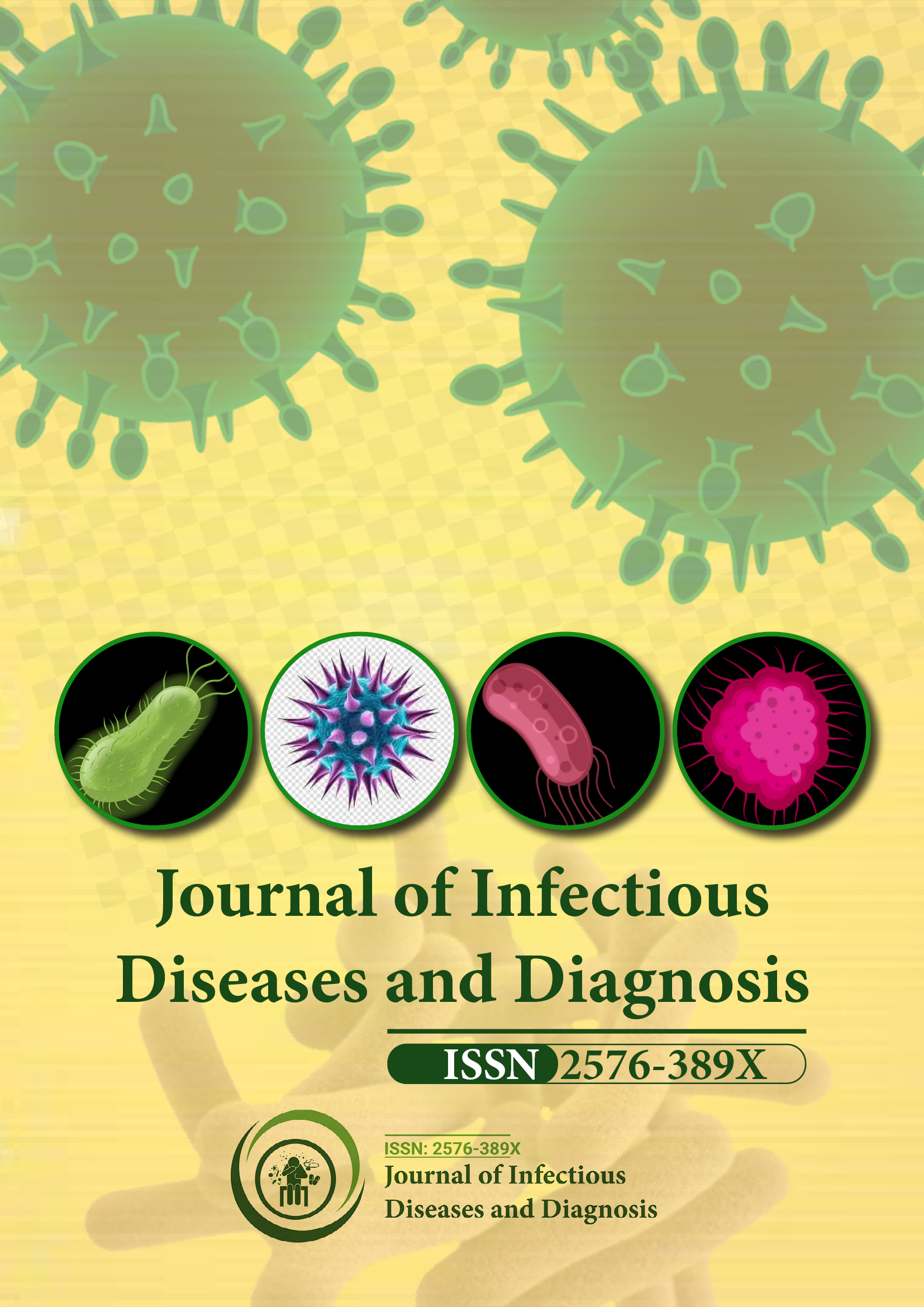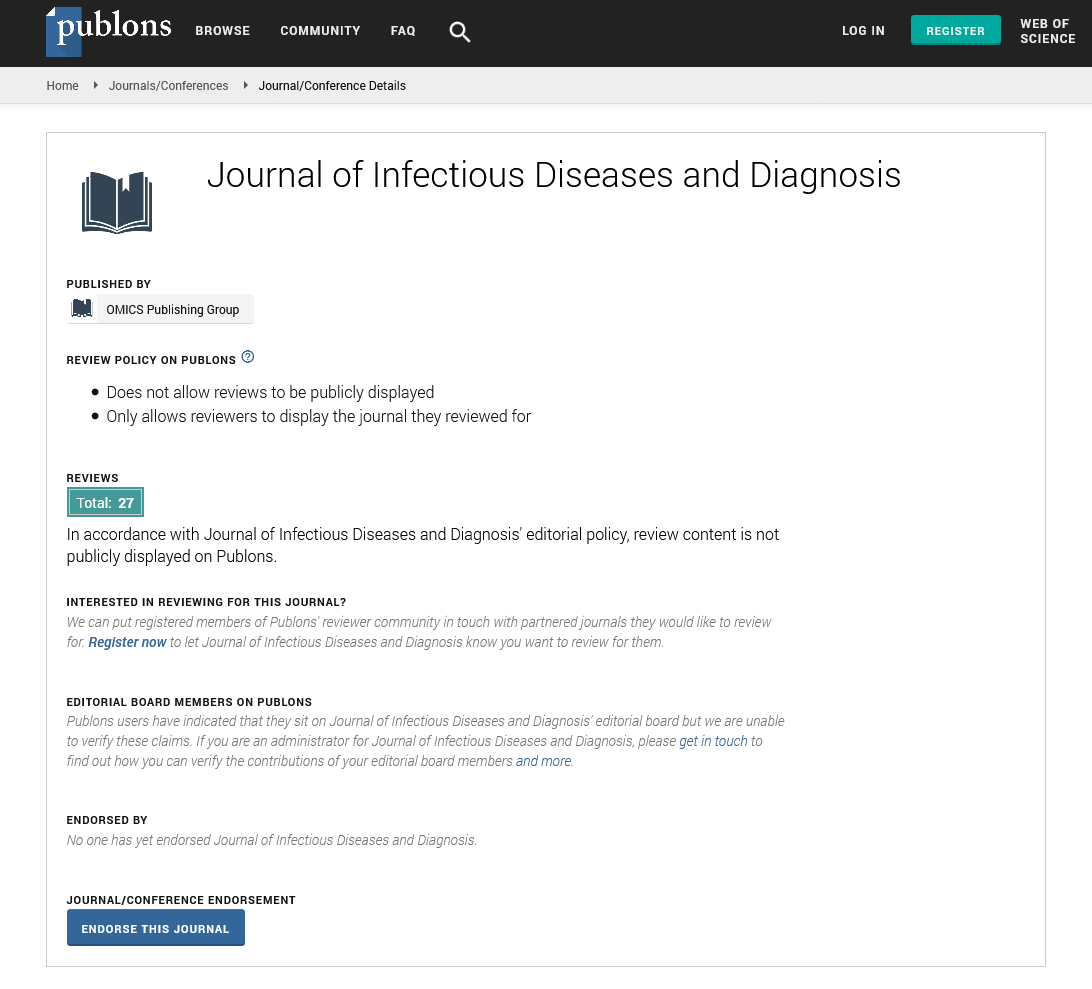Indexed In
- RefSeek
- Hamdard University
- EBSCO A-Z
- Publons
- Euro Pub
- Google Scholar
Useful Links
Share This Page
Journal Flyer

Open Access Journals
- Agri and Aquaculture
- Biochemistry
- Bioinformatics & Systems Biology
- Business & Management
- Chemistry
- Clinical Sciences
- Engineering
- Food & Nutrition
- General Science
- Genetics & Molecular Biology
- Immunology & Microbiology
- Medical Sciences
- Neuroscience & Psychology
- Nursing & Health Care
- Pharmaceutical Sciences
Perspective - (2025) Volume 10, Issue 2
Rubella and Congenital Rubella Syndrome: Prevention Through Immunization and Awareness
Immanuel Aladdin*Received: 25-Feb-2025, Manuscript No. JIDD-25-28667; Editor assigned: 27-Feb-2025, Pre QC No. JIDD-25-28667 (PQ); Reviewed: 14-Mar-2025, QC No. JIDD-25-28667; Revised: 21-Mar-2025, Manuscript No. JIDD-25-28667 (R); Published: 28-Mar-2025, DOI: 10.35248/2576-389X.25.10.321
Description
Rubella, also known as German measles, is a contagious viral infection that typically causes mild symptoms in children and adults. However, when contracted by pregnant women, it can result in severe congenital defects in the developing foetus, a condition known as Congenital Rubella Syndrome (CRS). Rubella is caused by the rubella virus, a member of the Togaviridae family. It primarily spreads through airborne droplets when an infected person coughs or sneezes. Although the disease often presents as a mild rash and fever in children, its true threat lies in prenatal infections. The virus can cross the placenta and disrupt foetal development, especially during the first trimester, leading to miscarriages, stillbirths, or serious birth defects.
Transmission and symptoms
Rubella is transmitted from person to person via respiratory secretions. Individuals are contagious one week before and after the rash appears. The incubation period ranges from 14 to 21 days. Typical symptoms include:
• Low-grade fever
• Rash that begins on the face and spreads downward
• Swollen lymph nodes, particularly behind the ears and neck
• Joint pain, especially in adult women
In many cases, rubella is so mild that it goes unnoticed, which allows the virus to spread unknowingly, particularly dangerous for unvaccinated pregnant women.
Congenital Rubella Syndrome (CRS)
The greatest danger associated with rubella lies in its effects during pregnancy. If a woman becomes infected during the early stages of pregnancy, especially within the first 12 weeks, the foetus is at high risk for developing CRS.
Diagnosis
Rubella is diagnosed through a combination of clinical symptoms and laboratory testing. Serological tests are used to detect rubella-specific IgM antibodies or a significant rise in IgG antibodies. In cases of suspected CRS, more detailed testing may include viral cultures or PCR testing from various body fluids of the infant.
Prevention
Vaccination is the most effective way to prevent rubella and its complications. The rubella vaccine is typically administered as part of the MMR (Measles, Mumps and Rubella) combination, given in two doses during childhood. Immunization provides long-lasting protection in most individuals.
Screening women of childbearing age for immunity is another preventive strategy. Those found to be non-immune are advised to get vaccinated before becoming pregnant. Since the vaccine contains a live attenuated virus, it should not be administered during pregnancy.
In addition, ensuring that healthcare workers are immune helps protect both themselves and vulnerable patients.
Maintaining high vaccination coverage in the population helps prevent outbreaks. However, gaps in immunization due to vaccine hesitancy, access issues, or policy lapses have led to occasional resurgences, even in countries with previously controlled levels.
Epidemiology
Prior to widespread vaccination programs, rubella outbreaks were common worldwide. The introduction of the rubella vaccine in the 1960s dramatically reduced its incidence in many countries. For instance, the Americas were declared free of endemic rubella in 2015 due to high immunization rates.
However, rubella remains endemic in parts of Africa, Southeast Asia and other regions with limited healthcare infrastructure. Global travel also raises the risk of cross-border transmission, making international cooperation essential for disease control.
Treatment
There is no specific antiviral treatment for rubella. Management typically focuses on alleviating symptoms through rest, hydration and the use of fever-reducing medications. In the case of CRS, supportive care is provided according to the child’s specific health needs, often involving multiple medical specialties.
Public health strategies
To control rubella, a multifaceted approach is needed. These efforts often include:
• Routine immunization of infants
• Supplemental immunization campaigns targeting children and women of reproductive age
• Surveillance systems for early detection and response to outbreaks
• Public education campaigns promoting vaccine acceptance and awareness
In addition, ensuring that healthcare workers are immune helps protect both themselves and vulnerable patients.
Challenges and future directions
Despite scientific advances and successful immunization programs in many countries, rubella elimination remains incomplete on a global scale. Challenges include misinformation about vaccines, inconsistent healthcare access and underreporting of cases. CRS, in particular, is under-diagnosed in areas with limited diagnostic capabilities. Further investment in healthcare systems, education and outreach is needed to close immunization gaps and move toward rubella eradication. Technological tools like digital health records and mobile alerts can also aid in increasing vaccination rates and monitoring population immunity.
Citation: Aladdin I (2025). Rubella and Congenital Rubella Syndrome: Prevention Through Immunization and Awareness. J Infect Dis Diagn. 10:321.
Copyright: © 2025 Aladdin I. This is an open-access article distributed under the terms of the Creative Commons Attribution License, which permits unrestricted use, distribution and reproduction in any medium, provided the original author and source are credited.

